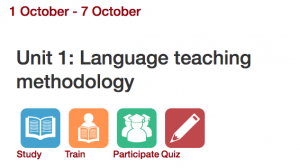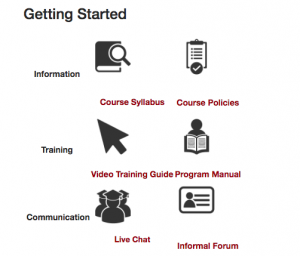As I explore this week’s discussion, I’ll start with Dr. Wood’s two-fold paradoxes.
But, since Dr. Wood and I share a love of statistics, a thought about math…

- We teach how we are taught
When I look back on my educational experiences, I consider myself lucky to having experienced a variety of educational methodologies. Reflecting on this I can see how my ever-developing teaching style has been forged from these experiences. Having grown up in Europe my educational institutions drew heavily from Piaget, Pestalozzi and Steiner. My American educational experience introduced me to new approaches and perspectives in educational instruction. As part of that I’ve also endured the large format undergraduate lecture classes (where I was one among two hundred plus), however, many of my upper-division educators were amazing (UCSC) in how they challenged us to engage, question, think critically and examine the issues we face in our world. They were builders of individual agency and through that helped empower students to reach new goals. Some of my teachers became mentors, and I ended up working on a research team for one of my professors. However, the experience that made the biggest impact on me was from a year that I had spent at a community college in an Anthropology class. Yes, I was (and still am) a huge Indiana Jones fan and that certainly had something to do with me taking this class initially. But to my surprise, this class uncovered some teaching style artifacts that would heavily influence me as an educator. This educator’s passion and love of the art of teaching was palpable. He brought the subject matter to life (no pun intended). This combined with interest in his students was truly inspiring. He was the type of teacher whose class you simply did not want to miss. So, “we teach how we are taught…” and I continually try to strive to be like those teachers who have and continue to inspire me so that I can make a positive difference in the life of my students.
- We ignore the diversity we don’t see
I am an ESL educator so I have the good fortune to experience a tapestry of diversity and culture on a daily basis! I truly enjoy and appreciate the rich learning experience that such a class provides as students share cultural experiences from which I gain new insights. Having grown up in a small country, that speaks four national languages, certainly contributed to my understanding of the value of diversity and how it can strengthen us as a society.
However, I understand that it remains a difficult challenge and needs to be at the forefront of our conversations, not only in the online environment but in f2f classes as well. In addition to the race and gender discrepancies, Dr. Wood’s examination of invisible factors, i.e., environmental pressures (housing and food insecurities) schooling experiences, and structural racism bring to light the increased importance of educators that are guided with Empathy particularly as front line civil rights workers. That being said, it is a challenge to truly put yourself into the shoes of another person’s experience if you have not experienced those things first hand yourself.
- Equity Minded Educators – the 5B’s
Well, based on the 5b’s outlined by Dr. Wood, I am glad to say that I feel that I’m well on my way to being an equity minded educator. But I’m fully aware that it is an ever-changing landscape and requires continuing education on behalf of us, the teachers. Below are some of the elements mentioned that I try to incorporate into my teaching to be more equity minded:
Be Intrusive
I teach both credit and non-credit ESL classes. For the f2f non-credit classes I particularly emphasize how important it is to be in attendance to avoid falling back. I have found that placing this emphasis early in class, combined with setting clear expectations and individual accountability have provided good attendance results. For my hybrid classes I monitor discussions and assignment submissions and follow up with students who did not submit assignments as well as those who partially submitted the assignments. However, I realize that that might not be enough for all students.
I like Dr. Wood’s example of the “early warning system” to get students back on track rather then having them fall further and further behind. I try to do this, but can certainly invest more energy beyond emails (digital feedback) to make sure that I catch those students who are showing early signs of struggle to ensure they have the necessary resources and support.
Be Relational / Be Community-Centric
As part of the “early warning system,” I really liked the idea of holding office hours using WhatsApp or FaceTime. I know that several of you have done this, so; perhaps it is time for me to explore this so that I can bridge the gap I’ve expressed in my previous posts about that “human” connection. As for setting up f2f meetings with online classes, I’ve not actually done that as an educator, but as a former student I pursued my online teachers and requested f2f meetings. At the time it was quite challenging because they were not really that interested in the idea of meeting their online students f2f. But, when I did meet them, it changed the dynamic and future online interactions in a positive way.
As for personal feedback, yes, I’m a big believer in that. We’ve covered this topic in prior posts so I’ll keep it short. As do many of you, I feel accountable to students to provide feedback that is personalized to the individual. It goes a long way to building trust and a strong relationship. Because my feedback is mostly in digital form (and I type fast) I can get through it even though it is time intensive. I’ve considered pulling from an archive of prewritten generic feedback statements, but in the end always start writing directly to a student. I know, finding a balance here is important.
Be Relevant
Ok, this post is getting too long so I will summarize how I try to have relevance that students can relate to:
- In all my presentation materials I incorporate ethically diverse images.
- I often have students write on a figure of importance in their native community. Finally, they present on those individuals and in the process educate other class members about the value and contributions of their culture to society.
- The last book I used in my class was Sandra Cisneros, The House on Mango Street.
- Because I enjoy gamification, I often incorporate options for assignments and assessments allowing students to pick and choose the manner in which they wish to demonstrate the skills learned.
Be Race Conscious
I feel that I “infuse” race consciousness into my classroom and the assignments that we do. I looked into the CCEAL site as well as the programs that are offered through CORA and am interested in learning more about Racial Microagressions. If anyone has taken this certificate program, or others, I would like to hear your opinion on the program or the content.




